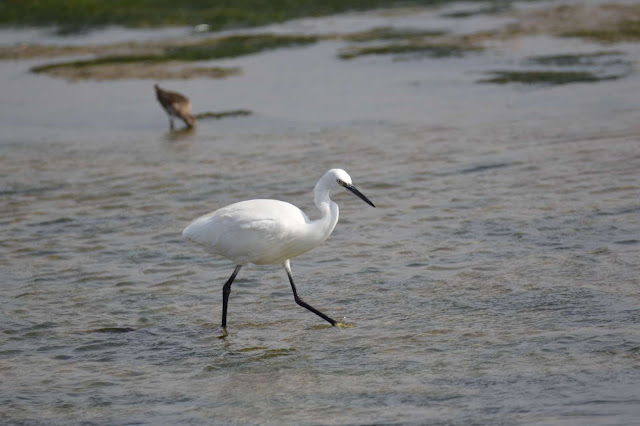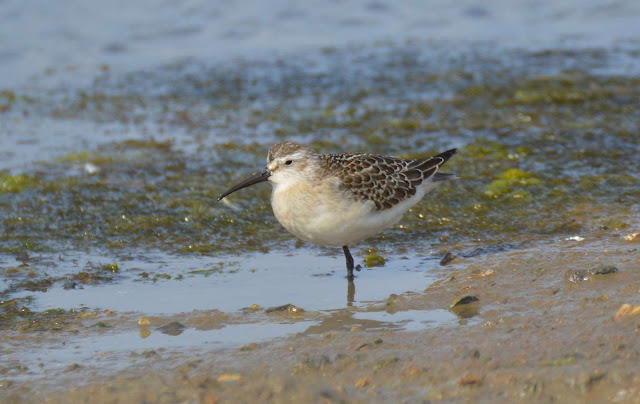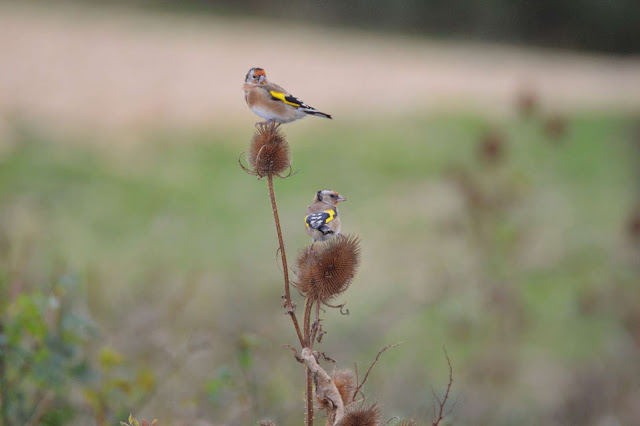Chris and I had agreed to meet at a favourite place. A Mecca this time of year for waders and wildfowl, either en route to somewhere else or here to stay the season, or perhaps never left at all.
This area was once used as a Salterns for the thriving salt industry and then as Oyster beds. Now it is an important wildlife reserve.
The Little Egrets were leaving their roost as we arrived. I hate late risers....
We walked towards the edge of the marshes and pools. The low early morning sunlight lit up Hurst Castle and it's lighthouse as we looked towards the Isle of Wight.
Mute Swan on the scrapes were a photo opportunity too hard to miss.
As were the Canada Geese also...
There are several pools dotted around the area here and as we headed towards the first, a Black Tailed Godwit proved very confiding not 12 feet from us across a water channel as it fed on the soft bank, probing with it's long bill for subterranean morsels.
We had a choice here, East or West along the coastal footpath? East was the answer and to Butts Lagoon. The roosting Black Tailed Godwit the first to appear. We had been here a few weeks prior and had very rare Wood Sandpiper feeding right here but not today.
Also here were the first small flocks of Dunlin. Come Winter these will number in their thousands.
In their singles and a brief stop over bird is the Little Stint. One or two were feeding close by on their way to distant shores.
Like the Dunlin, they feed along the shallow shore, seemingly incessant like little clockwork toys.
In a few days they will be gone. It's great to see these rare little birds.
We decided to head back West to Fishtail Lagoon this time. There were an abundance of Meadow Pipits around all with the intent of heading South.
Nearby was another very different wader. The Ruff. Here in it's Winter plumage. It's Summer plumage is a sight to behold. It's appearance giving it it's name, a very colourful and ostentatious apparel around its neck. In this picture it has seemingly undressed.
Looking out across the marshes, Grey Plover were in the process of shedding their darker feathers.
Back towards the lagoon, Spotted Redshank - one of my favourites - had emerged to feed. We counted five but upon study of the photos, there were six in total.
A Grey Heron sat and odserved and didn't move for ages, as is their way.
The Redshank kept on feeding....
We headed back East again, this time inland as the wind was rising and becoming a little intrusive. Not before a passing shot of a Curlew could be taken though.
Our path took us a little way inland and returned back towards the coast and Normandy Marsh nearer Lymington.
The tide was now well out. A Greenshank fed in the exposed bay...
Another temporary wader is the Curlew Sandpiper. This year is a good year to see them, although sometimes a little difficult to tell them apart from Dunlin, a keen eye is required. Varying degress of plumage and age can be a hindrance.
Little Egret, once rare are now common but still provide great views of a beautiful bird.
The Lapwing or 'Peewit' is often overlooked but it 's iridescence is captivating and they are in huge decline.
Curlew Sandpiper were in good numbers here. We counted at least eight.
A pair of Little Egret were having a little disagreement over fishing rights.The one on the left was a juvenile and a feisty one at that. It was to vanquish the adult, the little upstart!
Back on the Curlew Sandpiper, one was taking a bath....
It was now well past lunchtime. I had had an early bite to eat but Chris hadn't, so we decided to head back to the car park for refuelling.
As we reached Moses lock gates that wound around the reserve, a bird flew past Chris and he exclaimed as it did so. 'I think that could be a Wryneck' he blurted out. It landed on the path some forty feet ahead of us. The cynic in me doubted it at first glance.(It being a very rare migrant) We both raised our binoculars and realised it was said bird. I expelled a few colourful metaphors as we both looked at each other in a heady mix of incredulousness and joy!
A member of the Woodpecker family, it used to breed in this country but has declined to the extent it is only a rare and hard to see migrant these days. We were both made up and although we failed to locate it again and as Chris's stomach almost at famine setting, we carried on with grins as wide as the Solent!
More Little Egret posed well for us as we neared the car park. Plus a Redstart that proved elusive for a photo, and some Yellow Wagtail too. The day that had begun slowly, had turned into a gem.
Goldfinch were in large flocks, taking advantage of the flower seeds, These two were juveniles just emerging into adult plumage around their faces.
We had a late lunch in the car park, and made our way for a last glance at Fishtail lagoon in the vain hope of the of a reported Spoonbill. This we failed to see but we did manage a White Rumped Sandpiper which was the icing on the cake. Too far for a decent shot but a first for Chris and definitely for me too.
As rare birds go today was rather special, but I always have the thought in the back of my mind that whatever we see in a walk with Mother Nature, every day is special. Til next time....
N.B.
The title of this post is an excerpt from the poem 'Migratory Waders' by Francis Duggan




























































No comments:
Post a Comment
Please leave me a message if you would like to do so.